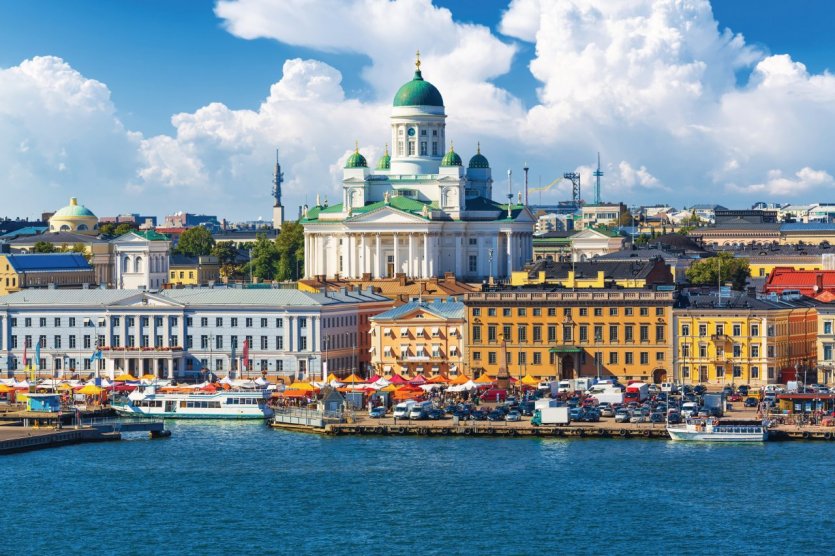
A small, young metropolis with a somewhat austere appearance, Helsinki lacks the majesty of its Scandinavian neighbor Stockholm. But make no mistake. Gone are the days when Sweden regarded Finland with paternalism at best, disdain at worst. Helsinki has shown its Nordic cousins that it's a force to be reckoned with. Decomplexed and enterprising, the city, which is one of Finland's most beautiful places to visit, has taken on the specific characteristics of a true Finnish culture with singularity. And it offers some unmissable sights to those who take the time to discover it, either over a long weekend or before setting out to conquer the rest of the country.
1. Senate Square and Tuomiokirkko Cathedral
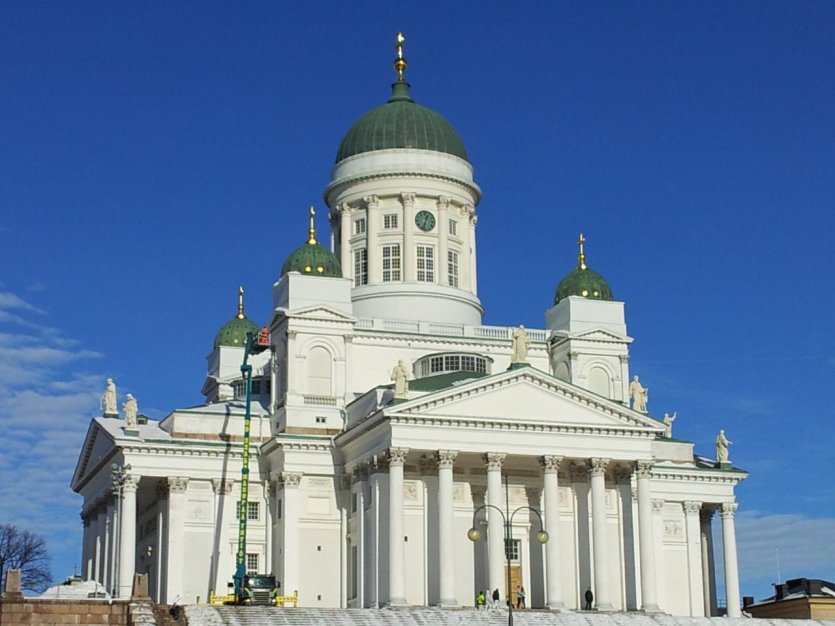
Senate Square, one of the 10 most beautiful squares in Europe, was designed by Johan Albrecht Ehrenström and Carl Ludvig Engel. Ehrenström, commissioned in the 19th century to create a city center worthy of a European capital, called on the Berlin architect Engel in 1816, who had already worked in Tallinn and St. Petersburg. Over the course of a quarter-century, Engel designed numerous public buildings and private residences in Helsinki and other cities across the country.
The northern part of the square is dominated by the white Lutheran Tuomiokirkko Cathedral, one of the largest domed cathedrals in the world, completed in 1852 to Engel's designs. Its majestic character is enhanced by a monumental staircase. The sculptures of the apostles on the roof are inspired by St. Isaac's Church in St. Petersburg. From the staircase, there's a magnificent view of the southern port (Eteläsatama) and surrounding streets. If you take a ferry from the Gulf of Finland, the panorama is even more impressive. The facade of the cathedral, topped by its large green dome and supported by numerous Corinthian columns, stands out superbly in this landscape. Also worth seeing on the square: the Governor's Palace, one of Engel's major works, and the former University of Finland.
Discover Helsinki's must-sees at your own pace and visit only the places that interest you most by booking your multi-stop bus tickethere .
2. The Kiasma Museum
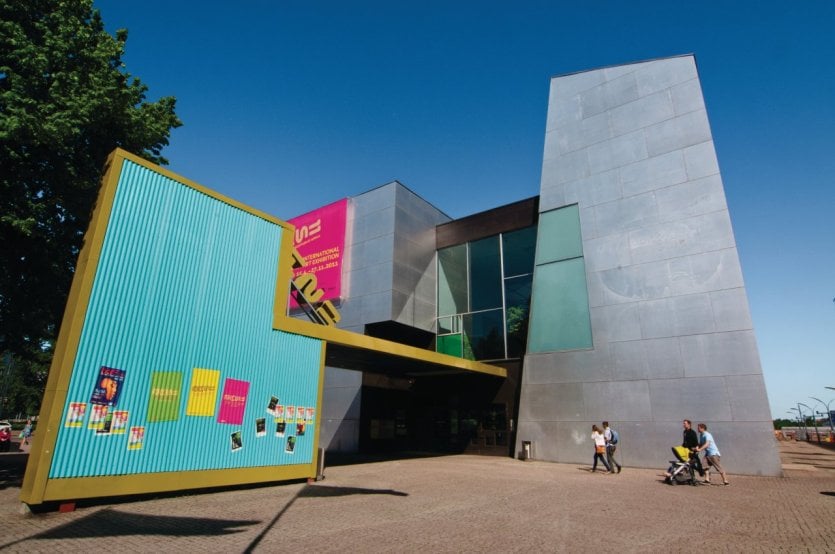
Housed in a magnificent building designed by Steven Holl and completed in 1998, the museum houses collections of contemporary art. The Kiasma Museum stands out for its commitment to pushing back the traditional boundaries of more conventional art museums, by emphasizing originality in its choice of exhibitions. Each year, it adds nearly a hundred works to its collection, both national and foreign. Room X highlights the most recent creations, while the Printti section focuses on the graphic arts. On the first floor, you'll also find a pleasant café-restaurant. The Kiasma museum also features a performance hall where eventsrelated to various contemporary forms of performing arts, such as dance, theater and music, are regularly presented. You can consult the exhibition calendar on their website, as well as the theater and performance program. This is Finland's busiest museum, and admission is free with the Helsinki Card (which you can book right here) as well as every first Friday of the month.
We recommend that you book this guided tour of Helsinki architecture to marvel at Helsinki's architectural wonders, such as the Kiasma Museum of Contemporary Art, the National Library of Finland, Central Station, the new Oodi Public Library and the Chapel of Silence.
3. Kauppatori Market Square
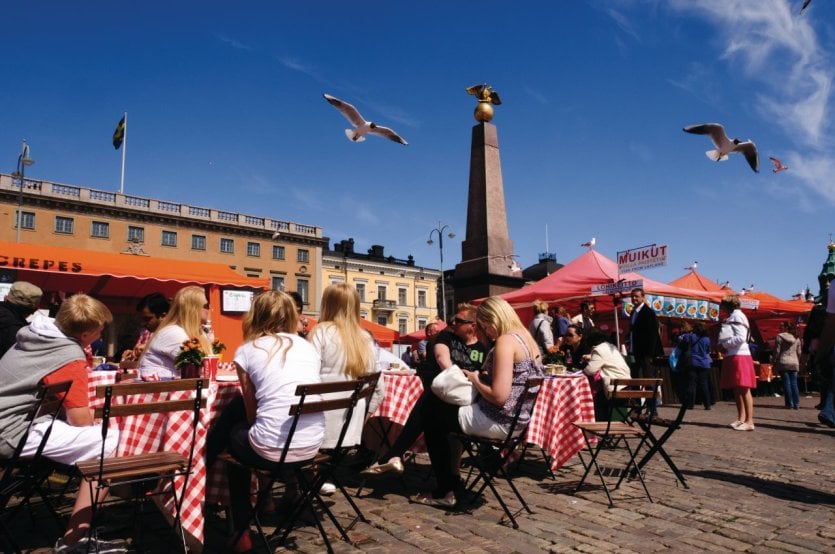
Kauppatori Market Square is the perfect place to take a stroll along Helsinki's coastline. Especially in summer, when this lively market takes over the southern harbor (Eteläsatama) in the heart of the Finnish capital. Stalls selling produce from all seasons fill the air with the scent of fresh dill and wild berries, while fishermen sell their fresh catch of the day. Traditional handicrafts offer a variety of birch-bark woven items, as well as Russian fur chapkas, among other treasures to slip into your suitcase before boarding the plane home. In the evening, on warm summer nights, the Place du Marché comes alive with musicians and a variety of street performances to delight visitors.
4. Uspenski Orthodox Cathedral
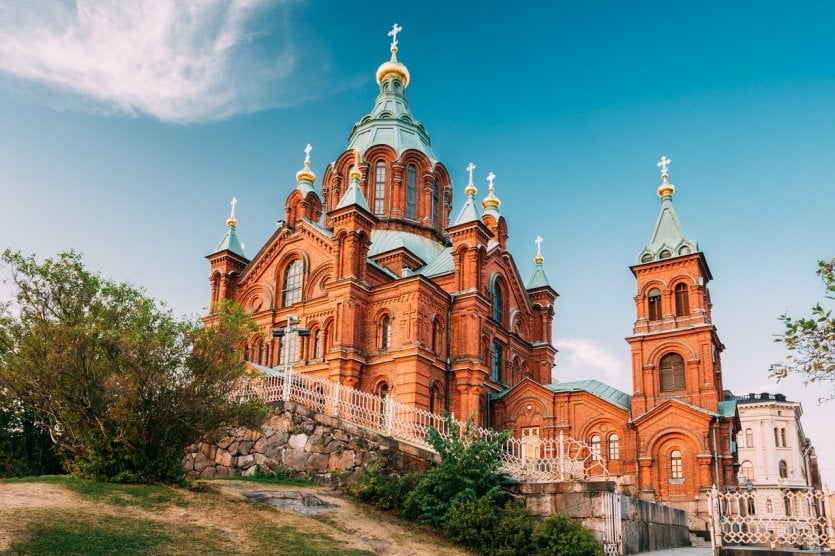
Built in 1868, Uspenski Orthodox Cathedral is a magnificent example of the Byzantine-Slavic style. The view from its esplanade is truly exceptional. The architect A.M. Gornoschtaev was commissioned to design the building in the 19th century. At the time, the region was home to two distinct and notable cultures: Swedish-speaking Finns and Russian notables. Over time, however, the predominantly Finnish population gradually imposed its preferences by the end of the 19th century. The cathedral remains the largest Greek Orthodox church in Western Europe. A very interesting visit.
5. Suomenlinna Fortress
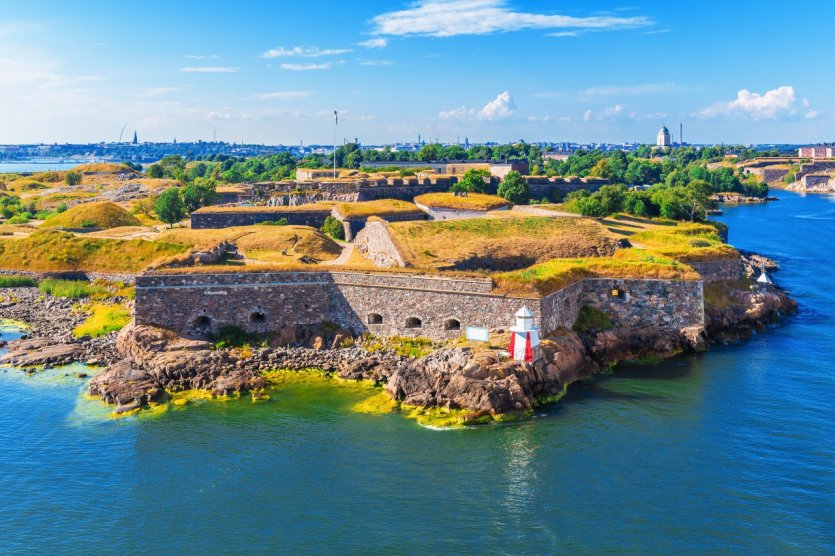
Suomenlinna Fortress, a UNESCO World Heritage Site, stands on a group of islands in Helsinki Bay. Its cannon embrasures are of exceptional beauty. Surrounding it are art galleries, workshops, museums, cafés... Originally built in 1748 by Swedish admiral Augustin Ehrensvärd on a group of islands and islets, the fortress, originally called "Sveaborg", was intended to protect the city against Russian expansionism. Although long considered impregnable, it was eventually surrendered to the Tsar's troops without resistance, leading to Finland's integration into the Russian Empire. During the Crimean War in 1854, it played an active and effective role in Russia's defense against French and British naval forces. After Finnish independence in 1918, it took the Finnish name of Suomenlinna. The domes of the church tower, symbols of Orthodoxy, were knocked down and replaced by a lantern. A number of artists have also set up studios on the site. Galleries, museums and theatrical performances in summer invite you to discover the site. Please note that most museums and cafés are closed in autumn and winter. Book your 5-hourguided tour of Helsinki here, including the ferry to Suomenlinna and a walking tour of the sea fortress islands.
6. Kansallismuseo, Finland's national museum
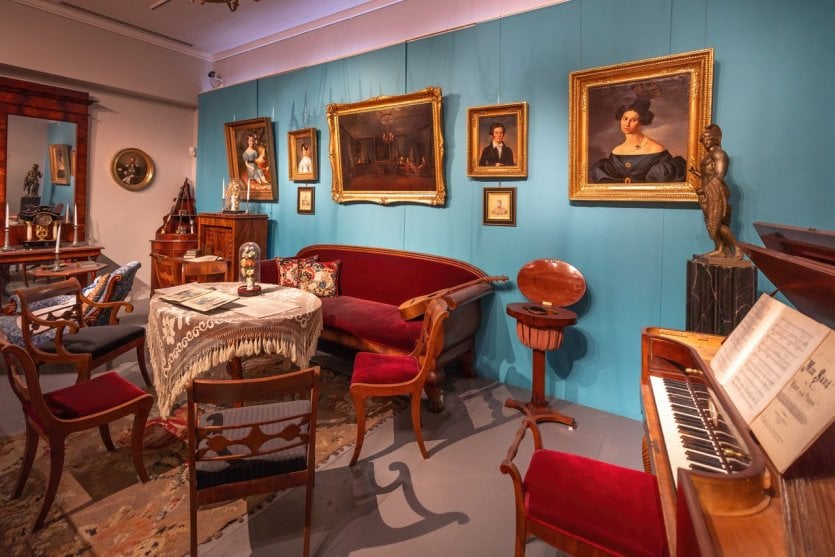
The Kansallismuseo National Museum is housed in a magnificent building that evokes the architecture of a Baroque church or a fairytale castle. Built in 1910 to the designs of architects Eliel Saarinen, Armas Lindgren and Herman Gesellius, it is the perfect embodiment of the Finnish Art Nouveau style. The museum is divided into three departments: Prehistory, History from the Middle Ages to the present day, and Ethnography, with a particularly significant section dedicated to Finno-Ugric peoples, such as the Hungarians, Volga peoples, Karelians, Sami and Eskimos. Treasures to be admired include Alexander I's purple-and-gold imperial throne, adorned with the Russian double-headed eagle, and a salon furnished in Gustavian style. The second floor houses an important collection of traditional clothing from the Sami, Karelian, Vepsian and Votian peoples. Temporary exhibitions often focus on contemporary Finland.
7. Temppeliaukio Church
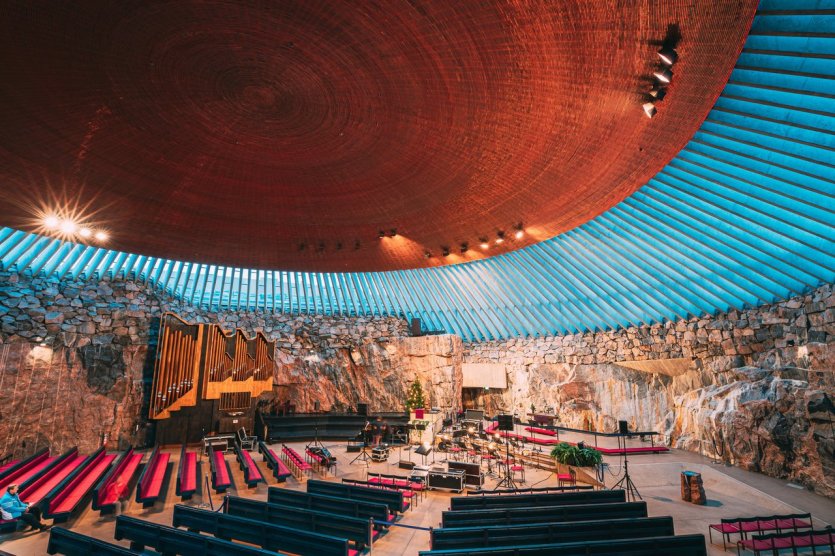
Temppeliaukio Church is a Lutheran church and undoubtedly one of the capital's most popular sights. And rightly so! Its position adjacent to Parliament puts it at the heart of the city. At first glance, you'd never guess it's a church. Once you've climbed the wide staircase, you enter a sleek, circular religious edifice that seems to have sprung straight from the imagination of the Suomalainen brothers. Its architecture is radically different from that of traditional churches, being built in the middle of a rocky outcrop. The altar, which rests on the rock, is dominated by a large bay window that allows daylight to penetrate. Recollection takes on a special dimension, all the more so as the church's excellent acoustics enable it to host numerous concerts. Numerous choirs and ensembles perform here during summer and music festival periods. A must-see! Click here to book your ticket for Temppeliaukio Church.
8. Helsinki Design Museum
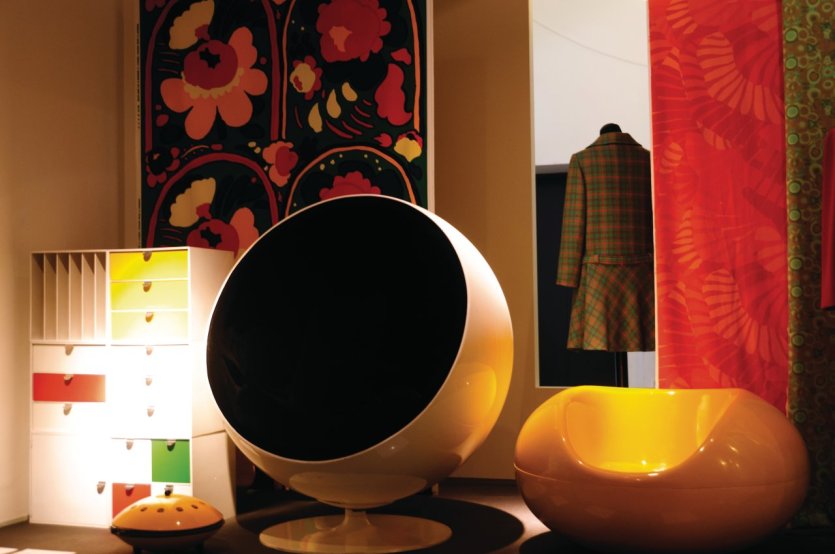
This design museum is a must for understanding Finnish design and how everyday objects are regularly transformed into works of art. The country's flagship museum was founded in 1873 by Carl Gustav Estlander. The aim of the institution is to promote aesthetics in industrial production and create models for students of applied arts. Presented by period, each collection features furniture and industrial products right up to the present day. A fun and surprising visit. Children's tours are also available. A (long-term) merger with the neighboring Musée de l'Architecture is planned.
9. Nuuksio National Park
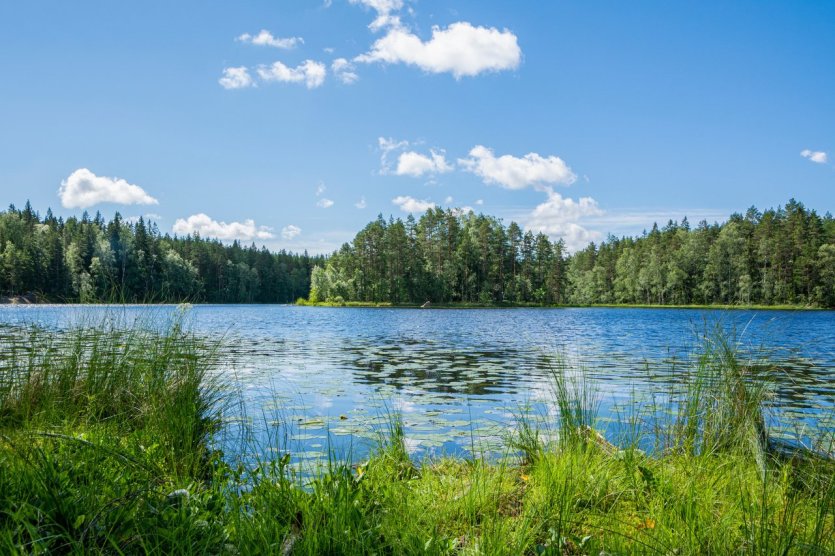
Nuuksio National Park, located just a few kilometers from the Finnish capital and one of our top 10 eco-destinations in Europe, offers a breath of fresh air amidst a superb lakescape. It's easily reached from Helsinki by a combination of train and short bus journey. The national park is a favorite destination for the capital's residents, who come here to hike, stroll and enjoy nature, whatever the season, thanks to an extensive network of hiking trails suitable for all levels. Although visitor numbers are higher in summer, Nuuksio National Park remains a small paradise for nature lovers. They'll have the opportunity to observe the local flora and fauna, including animals such as lynx, elk and flying squirrels. This must-do escapade is a must for visitors to Helsinki who want to explore the natural surroundings of the capital.
Book your guided half-dayexcursion to Nuuksio National Park right here : you'll discover Finland's natural features, enjoy the superb panorama and, with luck, come across some wild animals.
10. The cuisine
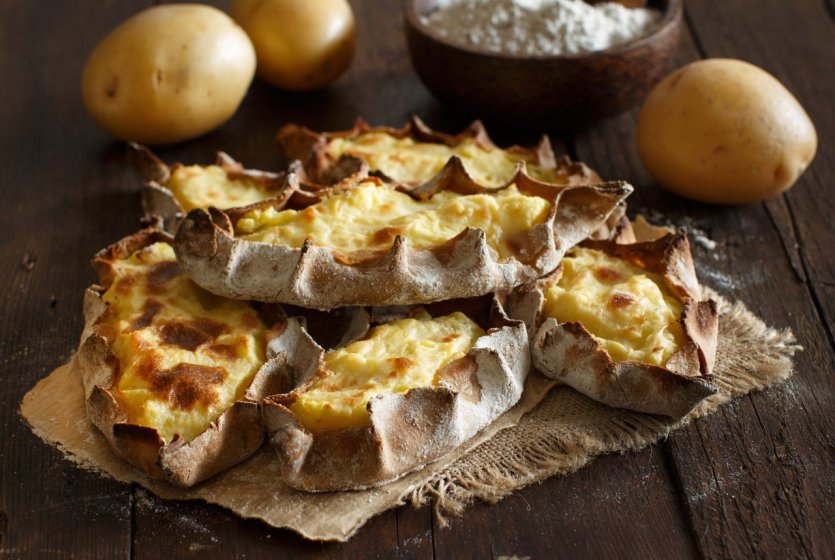
Like Finnish architecture and design, local cuisine is inspired by its environment. Blended with a variety of influences (Scandinavian in the southwest, Russian in the east), it is simple yet delicious. Hearty winter dishes are replaced by salads, barbecues, berries and fish in all its forms in summer. Like the British, who have turned teatime into a veritable ceremony, the Finns revere coffee (with an average of four cups a day, their consumption exceeds that of the Italians!), often accompanied by delicious pastries that would be a shame to go without. Each region has its own specialities: in Helsinki, you can find a Karelian karjalanpiirakka (a thin rye or wheat pastry filled with barley, potato or rice porridge), as well as the various varieties of kukko, filled rye bread, the best-known of which is the kalakukko (filled with small lake fish and pieces of bacon, a bit like the ancestor of the sandwich for lumberjacks).
11. Shopping paradise
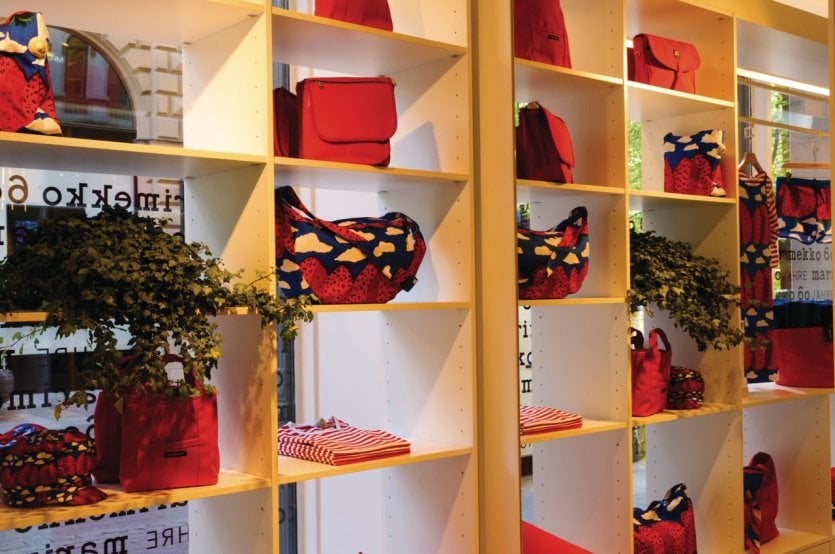
First and foremost, there are the quality handcrafted products that you can't find anywhere else, and that everyone dreams of being able to take with them in their luggage. A country of design par excellence, Finland offers a palette of functional, elegant objects that are a pleasure to look at and caress (the softness of wood or glass helps), as a reminder of days spent near the Baltic. Helsinki is brimming with stores of all sizes, from small, old-fashioned stalls to some of Europe's largest shopping malls. In summer, you'll stroll past local brand stores, from Marimekko to Iittala to Artek, or into intriguing little boutiques where you could spend hours, just for the pleasure of your eyes. In winter, you can cross huge underground corridors, between two shopping centers, to warm up in the heart of the city, in the old-fashioned charm of Stockmann or the vigor of the latest-generation superstores, where you can find literally everything. Helsinki, a shopping paradise...
Where to stay in Helsinki?
To get the best prices, it's best to book in advance, especially in Helsinki and its tourist areas. The best places to stay are in the lively Kamppi and Kluuvi areas, or around the railway station to find a youth hostel.
- The cheapest: EUROHOSTEL
This top-quality establishment offers simple but pleasant rooms that you can book in just a few clicks here .
- The most luxurious: HOTEL KAMP
A palace where Madonna and the Rolling Stones once stayed, which you can book in just a few clicks here .
- The most original: HOTEL KATAJANOKKA
A comfortable establishment that opened its doors within the walls of a former prison. Click here to book your stay.
What to do in Helsinki in 3 days
Day 1: Start by discovering Senate Square and Tuomiokirkko Lutheran Cathedral. Then stroll through Market Square (Kauppatori). Then head to the Katajanokka peninsula to discover the Uspenski Orthodox Cathedral and its view over the city. After lunch, visit the Kiasma Museum of Contemporary Art or the Design Museum.
Day 2. Take a boat to Suomenlinna Fortress. Back in Helsinki, go to Sibelius Park to admire the imposing and surprising statue of the same name, and return via Mannerheimintie, with its shops and restaurants. You can also visit the Kansallismuseo national museum or opt for a stroll through the Kaisaniemi botanical gardens.
Day 3. Visit the open-air museum on the island of Seurasaari, a playful park to discover the wooden architecture typical of the Finnish provinces.
What to do in Helsinki in winter?
If Helsinki is one of the coolest summer destinations, winter also offers some charming surprises for visitors. While the mercury promises to be negative, sometimes dropping as low as -20°C, the festive season promises a wonderful atmosphere. Under the snowy skies, the Christmas markets are truly enchanting, and provide an opportunity to find original gift ideas from the many artisan stalls. Then there's the sauna, an essential part of Finnish culture. Another must-see in a destination where you can enjoy the snow this winter is the Suomenlinna fortress, absolutely enchanting in winter. Finally, try your hand at pulkka, the Finnish sledge, or ice skating.


